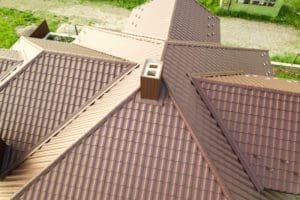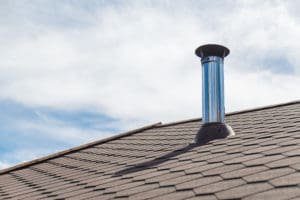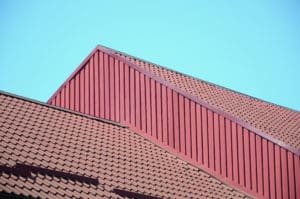When winter arrives in Martinsburg, West Virginia, it brings with it a unique set of challenges for homeowners, especially regarding roof maintenance. With heavy snowfall, ice buildup, and fluctuating temperatures, ensuring that your roof remains in top condition becomes essential. This article explores the common winter issues roofs face in Martinsburg, offers essential pre-winter maintenance tips, and concludes with our top strategies for protecting your roof during the harsh winter months.
Understanding the Unique Winter Challenges in Martinsburg, WV
Martinsburg experiences cold winters characterized by significant snowfall and temperatures that can fluctuate sharply. These conditions can create various challenges for residential roofs, requiring homeowners to be proactive in their maintenance efforts.
The Impact of Snow and Ice on Your Roof
Snow accumulation can place a heavy burden on your roof, especially if it remains unshoveled. Wet, heavy snow can add hundreds of pounds to your roof structure, which could lead to sagging or even structural failure. Furthermore, once the snow melts, it can freeze again, creating ice dams that can trap water on your roof, leading to leaks.
During the winter months, it’s crucial to monitor the snow load on your roof. If you notice significant accumulation exceeding a foot, it may be time to remove it. Ice dams also require attention, as they can prevent proper drainage and cause water to back up under your shingles. Homeowners should consider using a roof rake to safely clear snow from the edges of their roofs, ensuring that they do not inadvertently damage the roofing material while doing so. Additionally, installing heating cables along the eaves can help prevent the formation of ice dams, allowing melted snow to drain properly.
Wind Damage and Your Roof
High winds in the winter can loosen shingles, leading to potential leaks or increased energy costs due to heat loss. Wind can also carry debris that can strike your roof, causing damage. If you live in a particularly windy area, consider investing in wind-resistant roofing materials to help mitigate this risk.
Regular inspections during winter storms can help identify wind damage early on, preventing larger issues down the line. It’s imperative to keep an eye on any loose materials or structural weaknesses that could be exacerbated by gusts. Furthermore, trimming back overhanging branches can reduce the risk of wind-blown debris damaging your roof. Homeowners should also check their gutters and downspouts regularly to ensure they are clear of debris, as clogged systems can lead to water pooling and additional weight on the roof during winter storms.
The Role of Temperature Fluctuations
The temperature variations typical of Martinsburg winters can affect your roof in numerous ways. As temperatures rise and fall, materials expand and contract, which can lead to cracking or warping. Additionally, these fluctuations can contribute to condensation build-up in your attic, potentially resulting in mold and mildew issues.
To counter these effects, maintaining proper insulation and ventilation is key. Correctly installed roof vents can help regulate temperature and moisture levels in your attic, extending the life of your roof. Homeowners should also consider using vapor barriers in their attics to prevent warm, moist air from rising and condensing on cold surfaces. Investing in high-quality insulation not only helps maintain a stable temperature but can also lead to significant energy savings over time, making it a wise choice for those looking to improve their home’s efficiency during the harsh winter months.
Essential Roof Maintenance Before Winter

Before the winter weather sets in, it’s crucial to undertake some important roof maintenance. Addressing potential problems before the snow arrives can save you time, money, and stress later on.
The Importance of Regular Roof Inspections
A thorough roof inspection is an essential part of pre-winter maintenance. Look for signs of damage, such as cracked or missing shingles, rust on metal surfaces, or loose granules in your gutters. If you are not comfortable climbing on your roof, consider hiring a professional to conduct a comprehensive assessment.
Regular inspections not only identify pre-existing problems but can also reveal issues that might become amplified during the winter. By taking care of these issues now, you can prevent further damage from snow or ice accumulation. Additionally, it’s wise to check for any signs of moss or algae growth, which can hold moisture against your roof and lead to deterioration over time. Keeping your roof clean and well-maintained will extend its lifespan and ensure it remains a reliable shield against the elements.
Cleaning and Clearing Your Gutters
Your gutters play a critical role in managing water flow during winter thaw and rain. Clogged gutters can prevent proper drainage, causing water to pool on your roof and increasing the risk of ice dams. Clearing your gutters of debris such as leaves and twigs should be a priority before winter precipitation begins.
Consider installing gutter guards to minimize debris accumulation in the future. This can save you time and effort in maintaining your roof throughout the winter months. Furthermore, while cleaning your gutters, take the opportunity to check the downspouts for blockages. Ensuring that water flows freely through your drainage system will help prevent ice buildup and potential leaks, safeguarding your home from water damage.
Checking for and Repairing Leaks
Finding and repairing any leaks in your roof is vital before winter storms approach. Look for signs of water damage inside your home, such as stained ceilings or walls, and inspect your roof for any obvious breaches.
If you discover any leaks, it’s essential to take action promptly. Temporary fixes can be made with roofing tape or tarp until a permanent repair can be conducted. Ignoring leaks can lead to extensive damage, not only to your roof but also to your home’s interior. Additionally, consider checking your attic for signs of moisture or mold, as these can indicate hidden leaks that may not be immediately visible from the outside. Addressing these concerns early can save you from costly repairs and ensure a warm, dry winter season.
Top 10 Tips for Winter Roof Protection

Now that we’ve discussed the challenges and pre-winter maintenance, here are our top tips for protecting your roof throughout the winter season.
Proper Insulation and Ventilation
Good insulation helps keep your roof at a consistent temperature, minimizing the risk of ice dam formation. Additionally, proper ventilation ensures that moisture levels are kept in check, helping to prevent mold issues. Ensuring your attic is adequately insulated can also lead to lower energy bills during the winter months. A well-insulated attic prevents warm air from escaping, which not only helps maintain a stable temperature but also reduces the workload on your heating system, leading to further energy savings. Consider using materials like spray foam insulation, which can effectively seal gaps and provide superior thermal resistance.
Removing Snow Regularly
Regularly removing snow from your roof is crucial to preventing snow buildup and reducing stress on your roof structure. Use a roof rake from the ground, or hire a professional to safely remove heavy snow loads. Be sure to start from the edges and work your way up to avoid damaging the shingles. It’s also important to monitor the weight of the snow accumulation; if it exceeds the recommended load for your roofing system, it may be time to take action. Remember that wet, heavy snow can be particularly damaging, so keeping an eye on the forecast can help you stay ahead of potential issues.
Preventing Ice Dams
To prevent the formation of ice dams, ensure your insulation is thick and your attic is properly ventilated. You can also use heat cables along the eaves of your roof to help keep areas warm and prevent the formation of ice. Another effective method for preventing ice dams is to ensure all roof valleys and edges are clear of snow and ice buildup. Prompt removal can significantly reduce the risk of ice dam issues. Additionally, consider installing a snow guard system, which can help manage snow and ice melt runoff, directing it safely off your roof and away from your home’s foundation.
Checking for Damaged or Missing Shingles
During winter, it is vital to periodically check for any damaged or missing shingles. Wind can easily dislodge roofing materials, and snow can weigh them down. Identifying and repairing these issues quickly can prevent further damage and leaks. It’s advisable to conduct these inspections from the ground using binoculars or, if necessary, hire a professional to assess the condition of your roof safely. Regular maintenance checks can also help you catch potential problems before they escalate, saving you time and money in the long run.
Installing a Roof Heating System
For many homeowners, investing in a roof heating system can be an excellent long-term solution to combat winter challenges. These systems can help maintain a consistent roof temperature, preventing ice accumulation and reducing the risk of ice dams significantly. Consult with a roofing professional to determine if this solution is right for your home and region. The initial cost can be significant, but the return on investment can be a safer home and lower maintenance costs over time. Additionally, these systems can be controlled with thermostats and timers, allowing for efficient energy use and further cost savings during the cold months.
Post-Winter Roof Care

Once winter has passed, it’s time to assess the condition of your roof and plan for any necessary repairs. The end of winter is a critical time to evaluate any potential damage that may have occurred throughout the season.
Assessing Winter Damage
After the last snowfall has melted, conduct a thorough inspection of your roof for any signs of damage. Look for loose shingles, leaks, and interior signs of water damage. Take the time to document any issues to report to your insurance company if necessary.
Immediate action is essential if you discover damage. Taking care of repairs promptly can lead to a more manageable repair process and minimize costs related to further deterioration. Additionally, be on the lookout for any signs of ice damming, which can cause significant harm if not addressed. Ice dams form when snow melts and refreezes at the eaves, leading to water pooling under shingles and potentially leaking into your home. If you notice any unusual patterns, it’s crucial to investigate further.
Scheduling a Professional Roof Inspection
Engaging a roofing professional for an inspection after winter weather can provide peace of mind. They can thoroughly assess not only the roof surface but also inspect gutters, flashing, and ventilation systems.
Professional insight can uncover issues that are not immediately visible, allowing for repairs before they escalate into major problems. A qualified inspector can also evaluate the overall health of your roof, including the condition of the underlayment and the integrity of the roof structure. This comprehensive assessment is invaluable, as it can help you understand the lifespan of your roofing materials and when you might need to consider a full replacement.
Planning Repairs and Preparing for Next Winter
As winter is a stressful season for roofs, planning repairs in advance can help spread costs and avoid emergencies when winter returns. If you identify issues during your spring inspection, take the time to seek quotes from various roofing companies to find the best service for your needs.
Additionally, consider creating a winter maintenance plan based on this article’s tips to prepare your roof for the next winter season. Keeping track of tasks can help streamline your efforts in protecting your roof in Martinsburg. Regular maintenance, such as cleaning gutters and trimming overhanging branches, can significantly improve your roof’s resilience against winter weather. Moreover, investing in high-quality roofing materials and ensuring proper insulation can enhance your roof’s performance, reducing the likelihood of ice dams and leaks.
By taking the proper measures, you can significantly reduce the risk of damage to your roof during winter. With the right tools and strategies, your home can remain a protective shell against the harshest winter weather Martinsburg has to offer. Remember, proactive care not only safeguards your home but can also enhance its overall value, making it a wise investment for the future.





